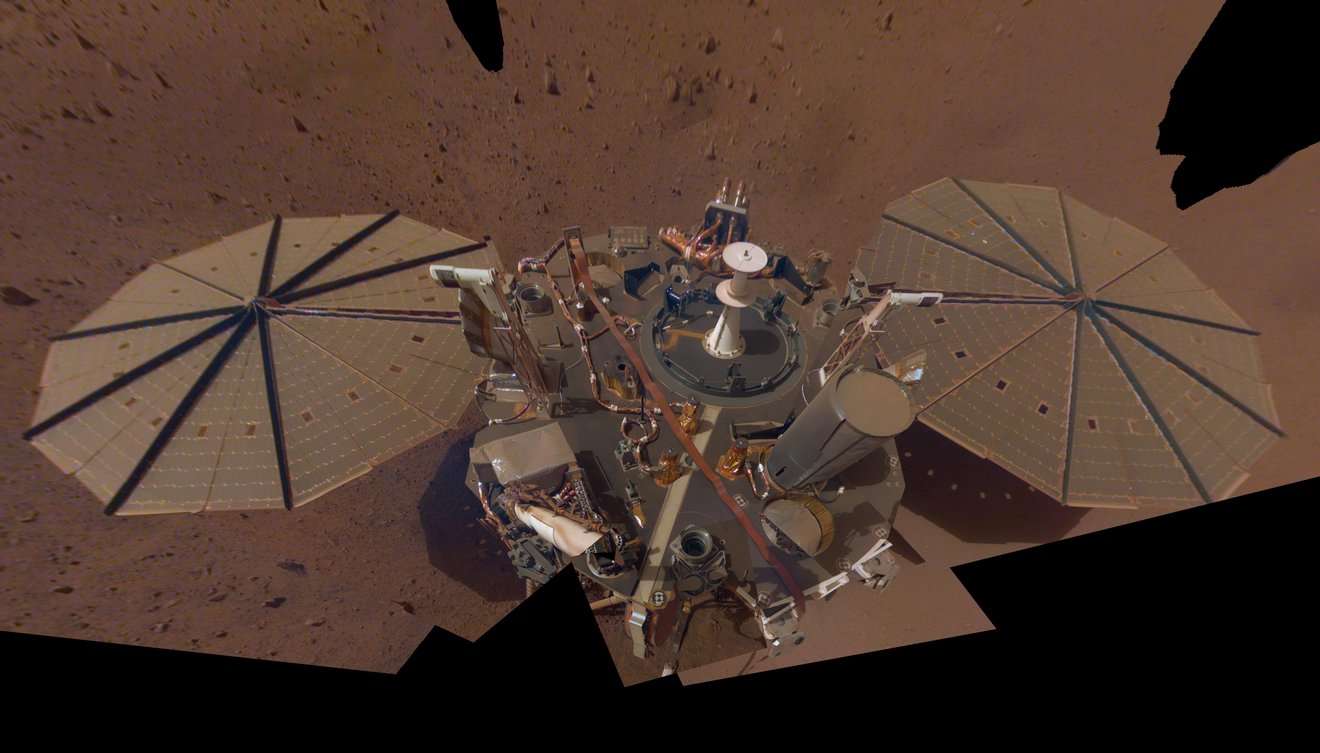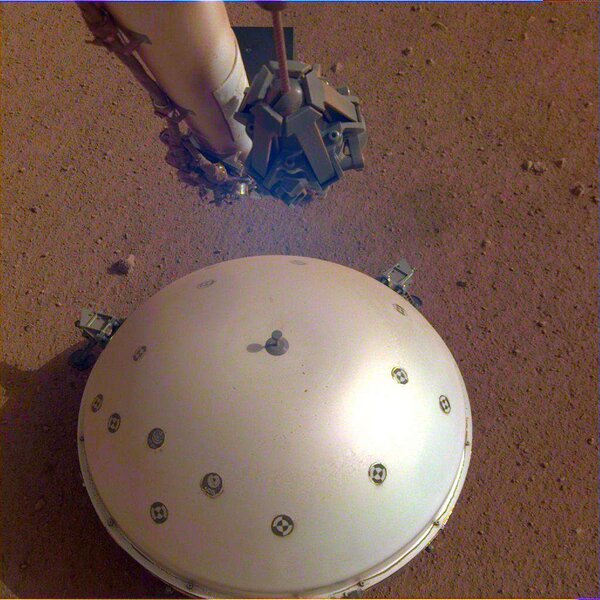Create a free profile to get unlimited access to exclusive videos, sweepstakes, and more!
InSight is shook, because it felt three huge Marsquakes trembling underneath it

To say both Mars and NASA’s InSight lander are shooketh is an understatement for the monster quakes that occurred within a month of each other.
InSight had been chilling for a while. It relies on solar panels for power, and when the Martian orbit took it too far away from the Sun earlier this year, it had to rely on its heaters to keep from freezing. Never mind how dusty the Red Planet is. The lander’s solar panels were shrouded in dust when the InSight team decided to try an unconventional maneuver, using sand grains that swept dust away as they were carried off by Martian winds.
Mars is creeping near the Sun again, but dusting off a panel gave it the power boost it needed to detect seismic waves from two massive Marsquakes that were set off by forces inside the planet on August 25. Another one, which still needs to be more closely studied, shook the planet again on September 18. InSight Principal Investigator Bruce Banerdt was thrilled to see these observations.
“They are the largest two quakes seen thus far in the mission, about 5 times larger in terms of energy released,” he told SYFY WIRE. “The first one seen on that day had the largest waves the seismometer has yet seen, and the second was the furthest that we have detected (almost 5000 km away).”
Like earthquakes, Marsquakes can tell us more about what is really going on in the innards of Mars, since Journey to the Center of the Earth (or Mars) isn’t happening for real any time soon. Marsquakes are actually triggered by phenomena similar to those that set off earthquakes. On both planets, cracks form when deep inner forces that make it to the crust become too much. Those forces are behind plate tectonics here on Earth, but there is no such thing on Mars. The Martian crust instead expands and contracts as the result of significant heating or cooling.
Earthquakes happen when tectonic plates collide. Plate tectonics don’t exist on Mars because its crust is not made up of tectonic plates. Mars did, however, have a volcanic temper in its past (and probably still hides it). It is believed that convection—hotter fluid rising above cooler fluid—may be what heats certain parts of Mars that react by expanding and cracking as tremors make their way through the crust. Banderdt believes that one possible origin of the recent Marsquakes is Valles Marineris, a huge canyon where the surface has been broken by underlying magma.
“On Mars, quakes are limited to contraction of the crust due to cooling and vertical motions due to thermal uplift or sinking,” he said. “Valles Marineris is intriguing because it is a location with enormous (and ancient) faults, and it is at about the right distance away from InSight.”
Valles Marineris is slightly over 6,000 miles from InSight. Though most larger Marsquakes were found to have started in Cerberus Fossae, which possibly saw volcanic activity several million years ago, one of the quakes was further away. This magnitude 4.2 quake was also the most distant one that InSight has ever picked up. Its vibrations were mostly slow and low-frequency, while the other quake that made Mars tremble that day that had slightly less magnitude at 4.1 but fast vibrations at a high frequency. It was also only 575 miles from the lander.
Besides giving InSight a stressful day, the other thing these quakes had in common was that they happened during the windiest time on Mars, which is also the loudest for the lander’s seismometer. The reason InSight usually detects Marsquakes at night is because there is not nearly as much noise in the way of their signals. That should give you an idea of how powerful the signals from these quakes were. Despite their magnitude, any quakes on Mars can tell us more about what is going on beyond the planet’s crust all the way to its molten core.
“Marsquakes can be used to map the structure of the interior, its compositional changes with depth,” said Banerdt. “These various layers (crust, mantle and core) were formed by the earliest processes of planet formation, and their depths and compositions depend on how those processes played out.”
This can only make you wonder about what the quake that happened on Sep. 18 might have to say about the planet’s guts.



























